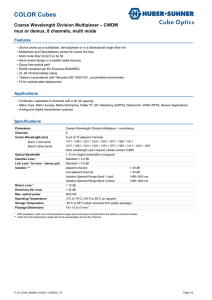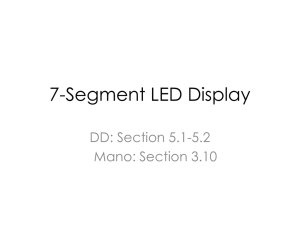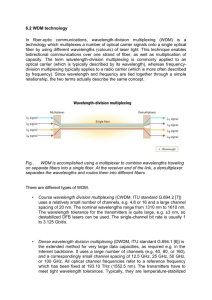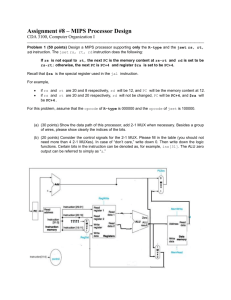A Novel MEMS Micromirror Optical Switch
advertisement
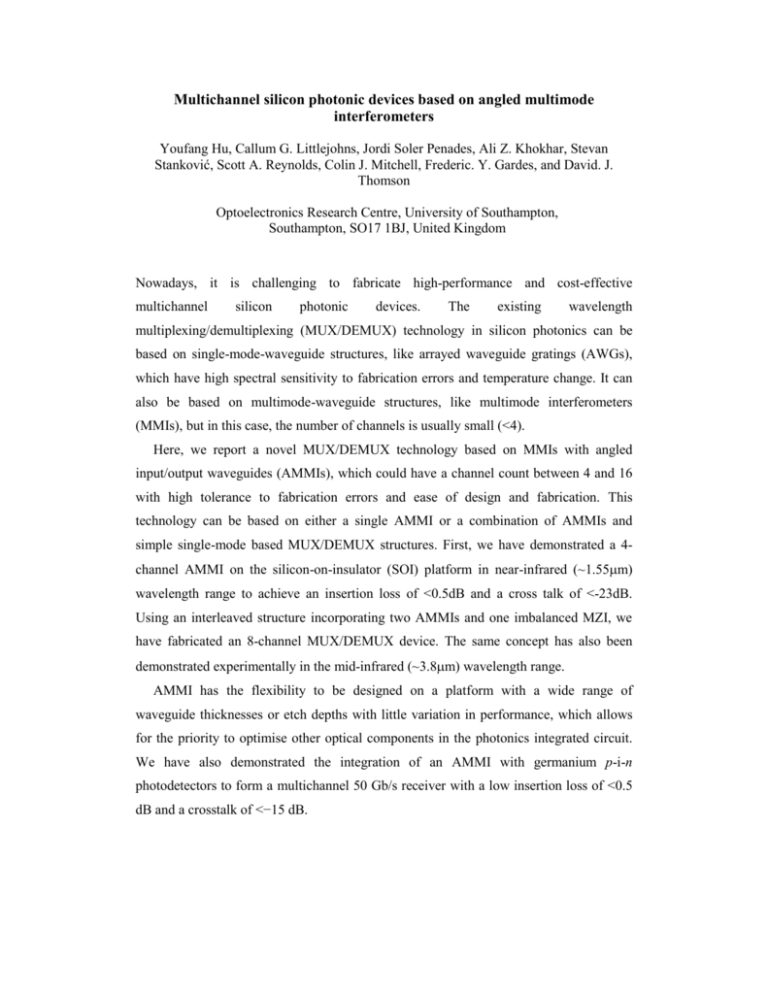
Multichannel silicon photonic devices based on angled multimode interferometers Youfang Hu, Callum G. Littlejohns, Jordi Soler Penades, Ali Z. Khokhar, Stevan Stanković, Scott A. Reynolds, Colin J. Mitchell, Frederic. Y. Gardes, and David. J. Thomson Optoelectronics Research Centre, University of Southampton, Southampton, SO17 1BJ, United Kingdom Nowadays, it is challenging to fabricate high-performance and cost-effective multichannel silicon photonic devices. The existing wavelength multiplexing/demultiplexing (MUX/DEMUX) technology in silicon photonics can be based on single-mode-waveguide structures, like arrayed waveguide gratings (AWGs), which have high spectral sensitivity to fabrication errors and temperature change. It can also be based on multimode-waveguide structures, like multimode interferometers (MMIs), but in this case, the number of channels is usually small (<4). Here, we report a novel MUX/DEMUX technology based on MMIs with angled input/output waveguides (AMMIs), which could have a channel count between 4 and 16 with high tolerance to fabrication errors and ease of design and fabrication. This technology can be based on either a single AMMI or a combination of AMMIs and simple single-mode based MUX/DEMUX structures. First, we have demonstrated a 4channel AMMI on the silicon-on-insulator (SOI) platform in near-infrared (~1.55m) wavelength range to achieve an insertion loss of <0.5dB and a cross talk of <-23dB. Using an interleaved structure incorporating two AMMIs and one imbalanced MZI, we have fabricated an 8-channel MUX/DEMUX device. The same concept has also been demonstrated experimentally in the mid-infrared (~3.8m) wavelength range. AMMI has the flexibility to be designed on a platform with a wide range of waveguide thicknesses or etch depths with little variation in performance, which allows for the priority to optimise other optical components in the photonics integrated circuit. We have also demonstrated the integration of an AMMI with germanium p-i-n photodetectors to form a multichannel 50 Gb/s receiver with a low insertion loss of <0.5 dB and a crosstalk of <−15 dB.
